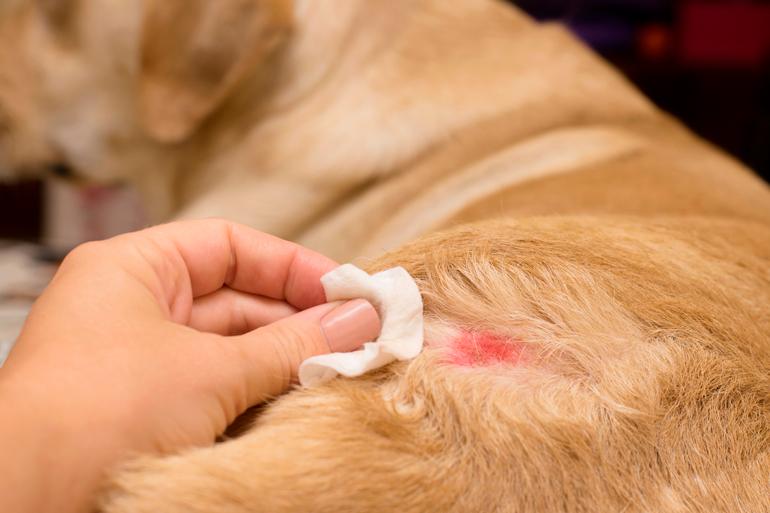Dog dermatitis | My dog scratches a lot, what's wrong?
It is very common in the fall for pet owners to notice that their dogs begin to scratch excessively or compulsively to the point of injury. And it is that the change of season can increase the appearance of allergies in dogs and cats, especially in the skin. The itching and irritation of our pet's skin are the most obvious symptoms of dermatitis in dogs.
But it is especially in autumn and winter when there is a peak in veterinary consultations related to dog itching. This occurs because the increase in airborne dust caused by falling leaves can trigger your dog's allergies. So many owners go to the vets with the following statement: my dog scratches a lot.
The first thing you should know is that it is very common for dogs to scratch occasionally throughout the day. Although if you have noticed an increase in the frequency or intensity of itching, also called pruritus, which causes your dog to scratch much more than normal, but does not have fleas, it is very possible that the cause is an allergy or canine dermatitis .
Why does my dog scratch a lot if he doesn't have fleas?
When a dog has pruritus or itching, it tends to lick or nibble the area that causes it discomfort. You can also try to rub against the wall or crawl on the floor. In addition, these intense itching can affect your mood. Certain changes in the skin that may be the cause of this pruritus or itching, such as reddening of the skin, papules, scabs, etc. Likewise, your dog may have hair loss, areas with alopecia and other dermatological disorders. The most frequent reasons why your dog scratches a lot without having fleas, ticks or other parasites are:
1-. Atopic dermatitis
This inflammatory disease is caused by environmental allergens, such as tree and plant pollen, fungal spores, or dust mites in genetically predisposed dogs. Atopic dermatitis occurs even more when the presence of environmental allergens increases, which occurs very often in autumn and spring. It is also known as a spring or seasonal allergy and its manifestation will depend on factors such as the type of allergen, the breed of the dog, the climate and the geographical area.
The areas in which atopic dermatitis most often manifests itself in dogs are: eyes, muzzle, armpits, inguinal region, abdomen, fingers and interdigital spaces. It is not a serious disease, but if you suspect that your dog has dermatitis, it is best to see your vet.
2-. Allergy to certain foods

If your dog is scratching and does not have fleas, it may be a reaction to some food. Allergies are a process of immunological origin in which the dog's body unleashes exaggerated inflammatory reactions to substances that are not harmful or dangerous by themselves. This type of allergic reaction is caused by intolerances or reactions caused by the consumption of certain foods. The most common food allergens in dogs are:
3-. mite dermatitis
Another cause that can cause your dog to scratch a lot is pruritic dermatitis, caused by mites. The areas most affected by these arachnids are the ears, around the eyes, groin and elbows. This itching or discomfort caused by mites in dogs manifests itself throughout the year.
What to do if my dog scratches too much?
It may interest you:
We must go to the vet because it will reflect a problem that needs to be properly diagnosed and treated. In addition, it is advisable not to delay the visit because due to scratching dogs can self-inflict lesions on the skin that worsen and increase the itching, entering a vicious circle that must be stopped.








1772